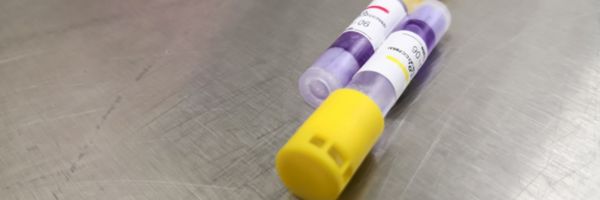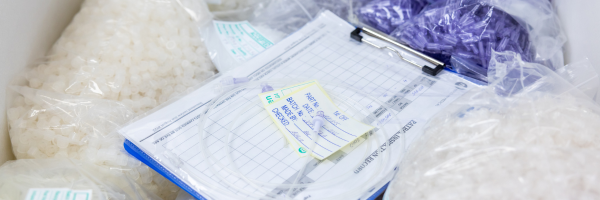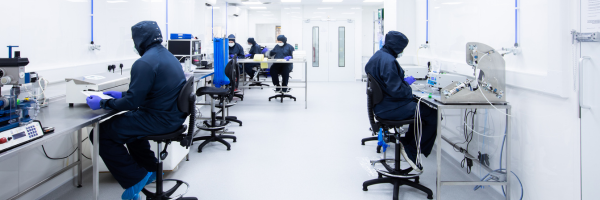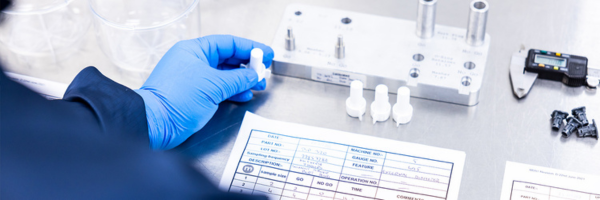
Medical sterilization is most often the final part of the medical device contract manufacturing process and there are various sterilization methods that can be used. The main ones are gamma (irradiation) sterilization and ethylene oxide (EtO) sterilization.
Gamma sterilization and EtO sterilization are both suitable for achieving a sterility assurance level of 10-6, which is the minimum requirement for the sterilization of medical devices. This means that for one million sterilized items, there will not be more than one microorganism. Most single-use medical device packaging is suitable for these sterilization methods.
To help make sure that you choose the right sterilization method, and to ensure the safety, quality and performance of your products, we have put together this short guide to gamma sterilization and EtO sterilization, including information on the processes and where and in what circumstances they are used.
What is ethylene oxide sterilization and how does it work?
EtO sterilization is a popular means of medical device sterilization in the UK and throughout Europe. Highly effective and efficient, it is the method used by leading medical device contract manufacturers. The official standard is EN ISO 11135:2014/A1:2019.
This type of sterilization uses a gas diffusion process. Sterilization is achieved when microbial DNA is destroyed by an ethylene oxide gas molecule. The effectiveness of the sterilization process is dependent on the degree to which the gas can penetrate products and their packaging. For example, densely packed products without much air space surrounding them are harder to sterilize than those that are more sparsely packaged in a way that allows more air to flow around them. Hence, it is recommended that devices are shipped in breathable packaging to allow the ethylene oxide gas to break through the sterile barrier and to react with all the necessary surfaces.
When the sterilization process is completed, the degassing process must be thorough and remove as much of the gas as possible. The amount of gas remaining on a device after sterilization is strictly controlled. This remainder is often referred to as EtO residual. EN ISO 10993-7:2008 provides guidance on residual limits for each type of device and with regard to patient exposure. In short, the longer your device is intended to be used for, the lower the residual on the device needs to be.
While EtO sterilization is mostly performed at specialist facilities, it can be carried out in-house using small sterilization cabinets or chambers. However, this equipment is not suitable for mid-to-high-level volume sterilization.
What are the pros and cons of the ethylene oxide sterilization process?
A wide range of medical device materials can be sterilized using the EtO sterilization process, including plastic and other heat-sensitive materials, and products that are sensitive to radiation. This is a main reason why EtO sterilization is often preferred
Another major advantage of EtO sterilization is that mixed products can be included in a single sterilization cycle or validation. This generates key process and cost-efficiency benefits. However, EtO sterilization cannot be used on sealed air tight medical devices, or devices that are very densely packaged
What is gamma sterilization and how does it work?
Gamma sterilization is still widely used in Europe, although it is a more popular method in the US. It sterilizes products by exposing them to a radiation source, normally Cobalt-60, which is highly effective at destroying microorganisms, with minimal temperature changes. The official standard is EN ISO 11137-4:2020.
How much radiation a product receives depends on the type of product and the amount of radiation prescribed for effective sterilization. A dosimetric release system makes it possible for products to be processed, verified and immediately released for transportation. This makes the process very quick and more suitable for short shelf-life products.
Gamma sterilization can only be carried out in approved sterilization facilities. As such, it is unlikely to be suitable for most in-house facilities as the control of Cobalt-60 in the volumes needed for mass product sterilization are strictly governed. Also, Cobalt-60 is quite expensive to buy.
What are the pros and cons of the gamma sterilization process?
While gamma sterilization can be cheaper and faster than EtO sterilization, the validation costs relating to gamma sterilization are often higher (it requires quarterly revalidation and dose auditing). Therefore, it is suited to high-volume production.
Irradiation is often shown as a range, such as between 15 and 25 kGy. If a product receives this dose, it has absorbed between 15 and 25 kilo-grades of radiation. For devices with a higher bioburden, the validated dose may need to be higher, such as between 25 and 35 kGy. The higher the dose of radiation, the more the product is affected.
Devices that receive a high dose of irradiation often display a yellowing or browning or the packaging becomes stiff or brittle. This can be problematic if you need to rework or re-sterilize a batch of your device. This is why the aim is always to use the suitable dose for your device. It should be noted here that reviewing the bioburden is more important in such circumstances.
Gamma sterilization must be dose mapped and dose audited. A pallet of product must be tested to make sure that devices in the middle receive an effective dose of radiation. Notably, the same validation is unlikely to be suitable for multiple devices if they have different weights or density. Furthermore, gamma sterilization can cause material cross-linking, which can affect product stability.
Sterilization options and your manufacturing partner
When it comes to selecting a sterilization process, it is very likely that your medical device will be most suited to a specific method. Factors linked to cost, speed-to-market, intended device use, shelf life, materials and battery or microchip use will all influence the choice.
As such, it is vital that when using a medical device contract manufacturer, you choose a specialist partner with the experience to correctly assess your sterilization needs, the resources to deliver high-quality sterilization and the expertise to carry out this sterilization to the highest standard.
Meridian Medical is an established and experienced contract medical equipment manufacturer specializing in a wide range of medical device designs, development and supply services, including medical sterilization.
To find out more about how Meridian Medical can help you with your medical product design and manufacture, get in touch today by filling out our online form or contacting us on 01903 732344 or info@meridian-medical.com.

Author: James Fenton, Managing Director
James Fenton, Managing Director of Meridian Medical since 2017, has over 20 years of industry experience. He has been pivotal in developing and producing over 500 types of single-use medical devices, including CE-marked class 2 and 3 devices. With a strong focus on business strategy, project management and customer support, James ensures Meridian Medical's agility and innovation. His expertise is backed by qualifications in Business Studies and Medical Process and Equipment Validation, plus extensive industry training. James's insights into the industry that he has dedicated his entire career to provide a bank of invaluable information aimed at increasing knowledge of and driving advancements in medical device manufacturing.



